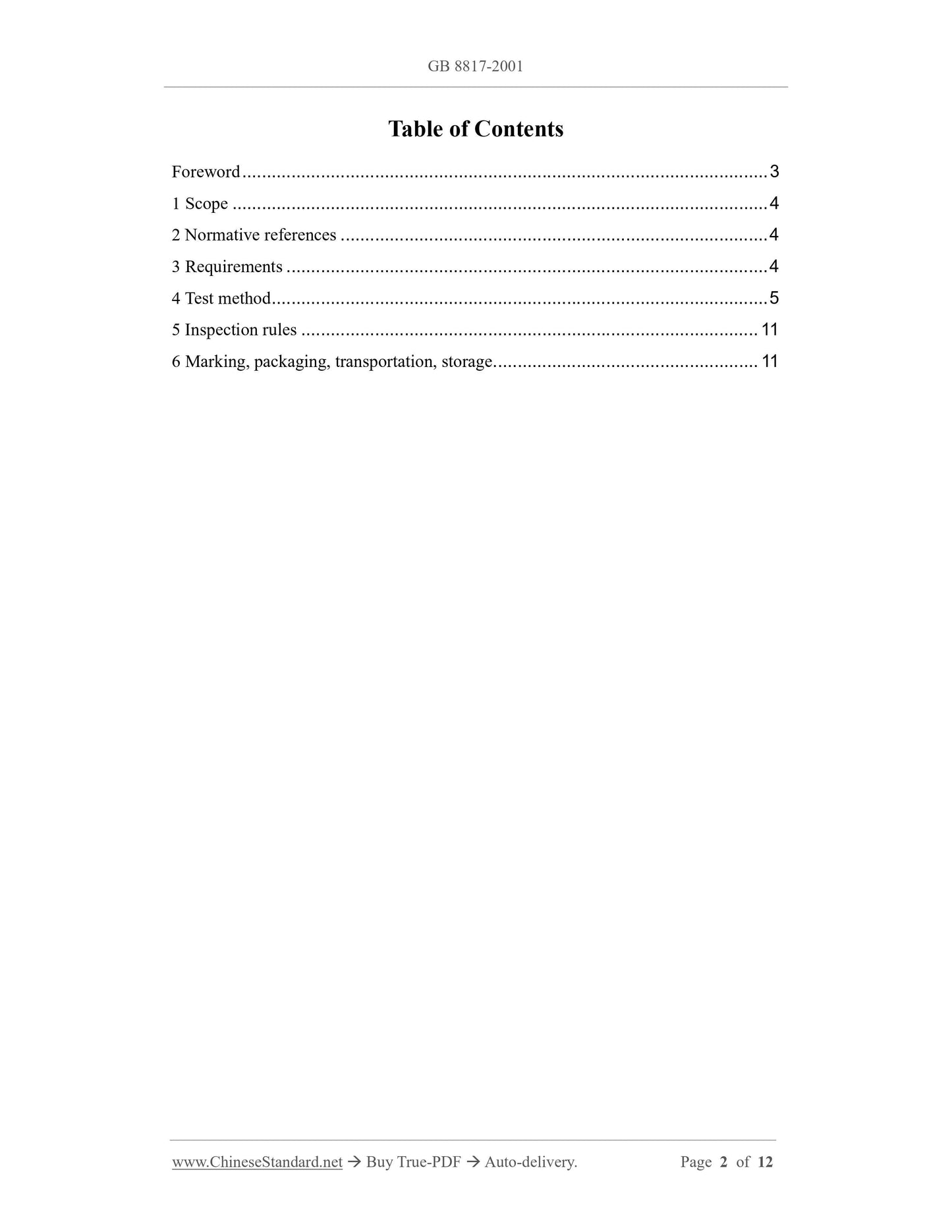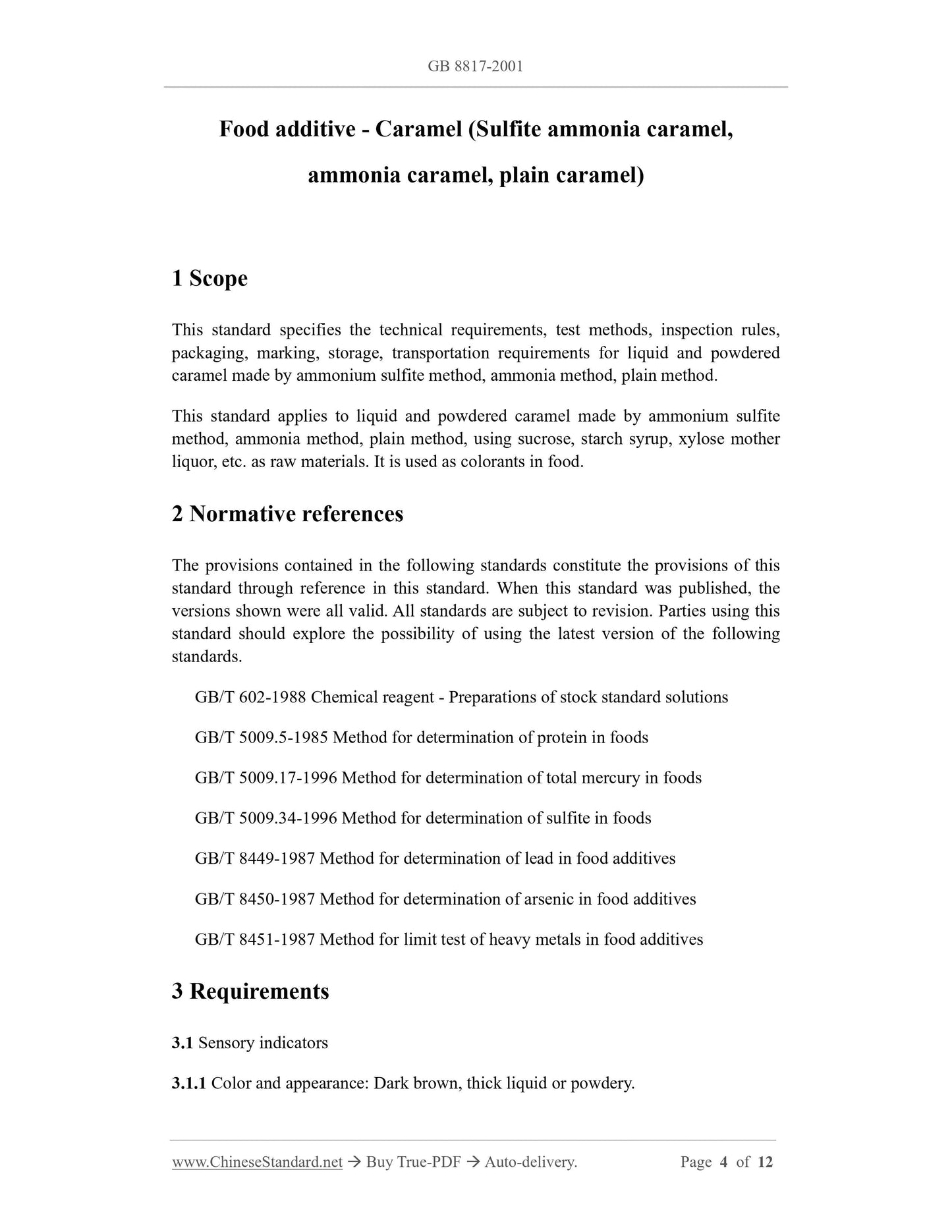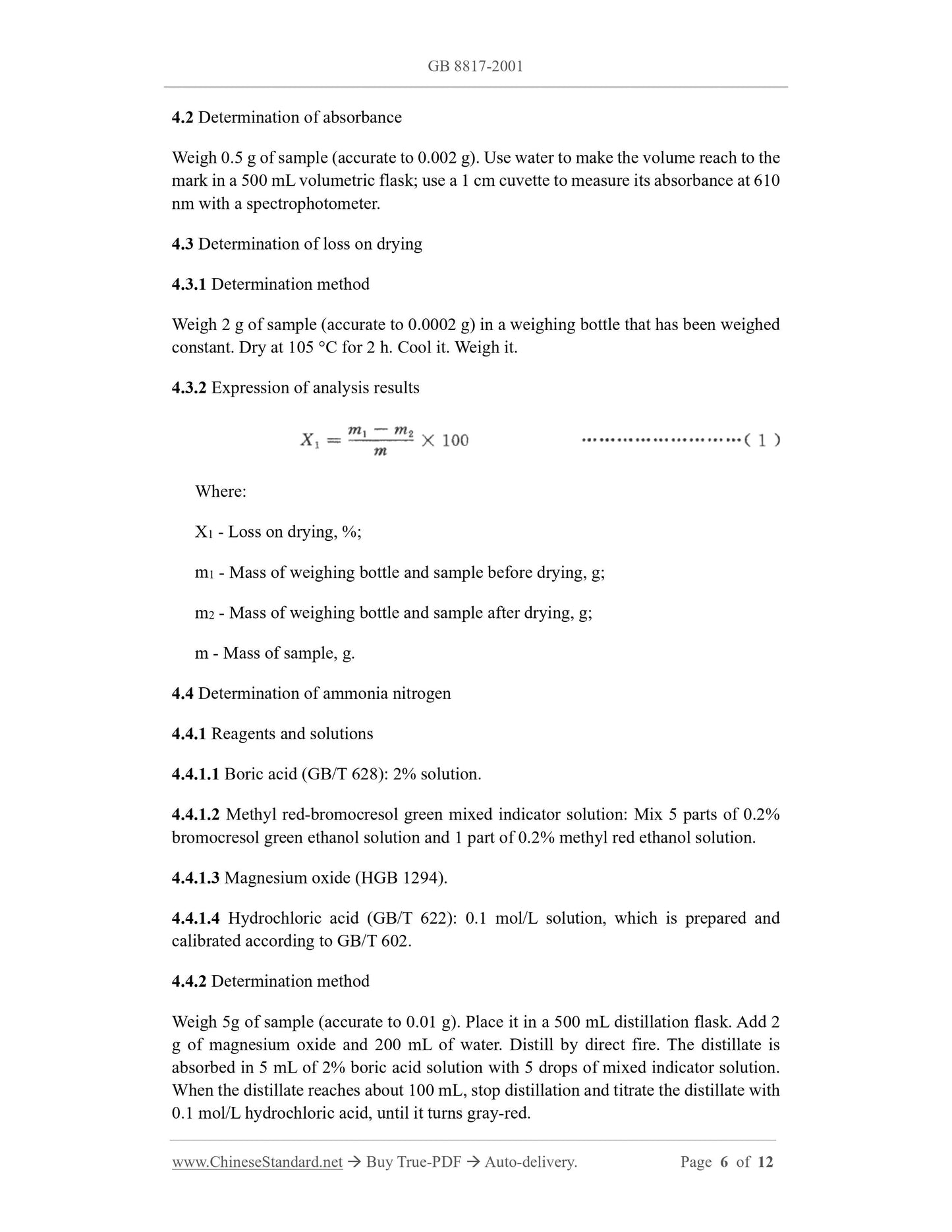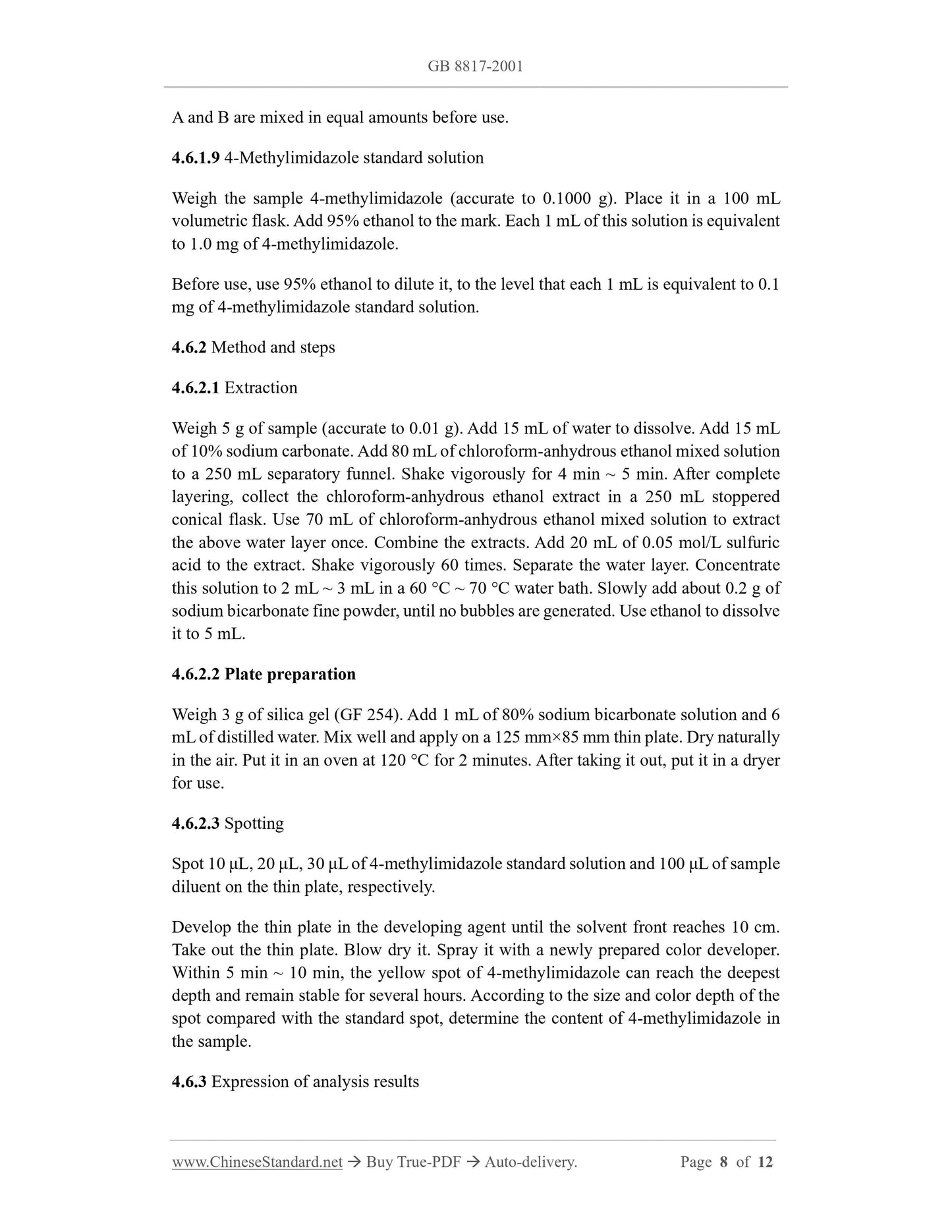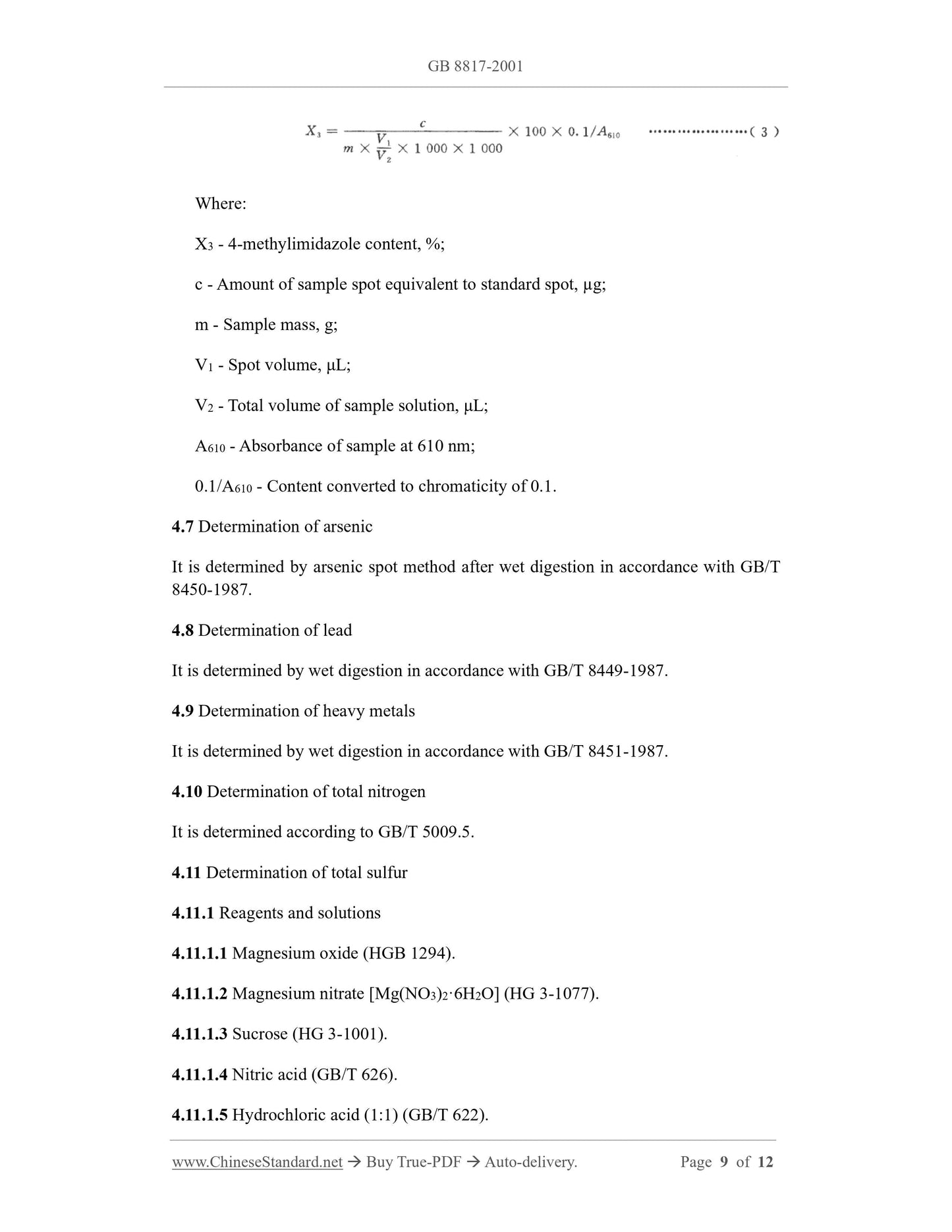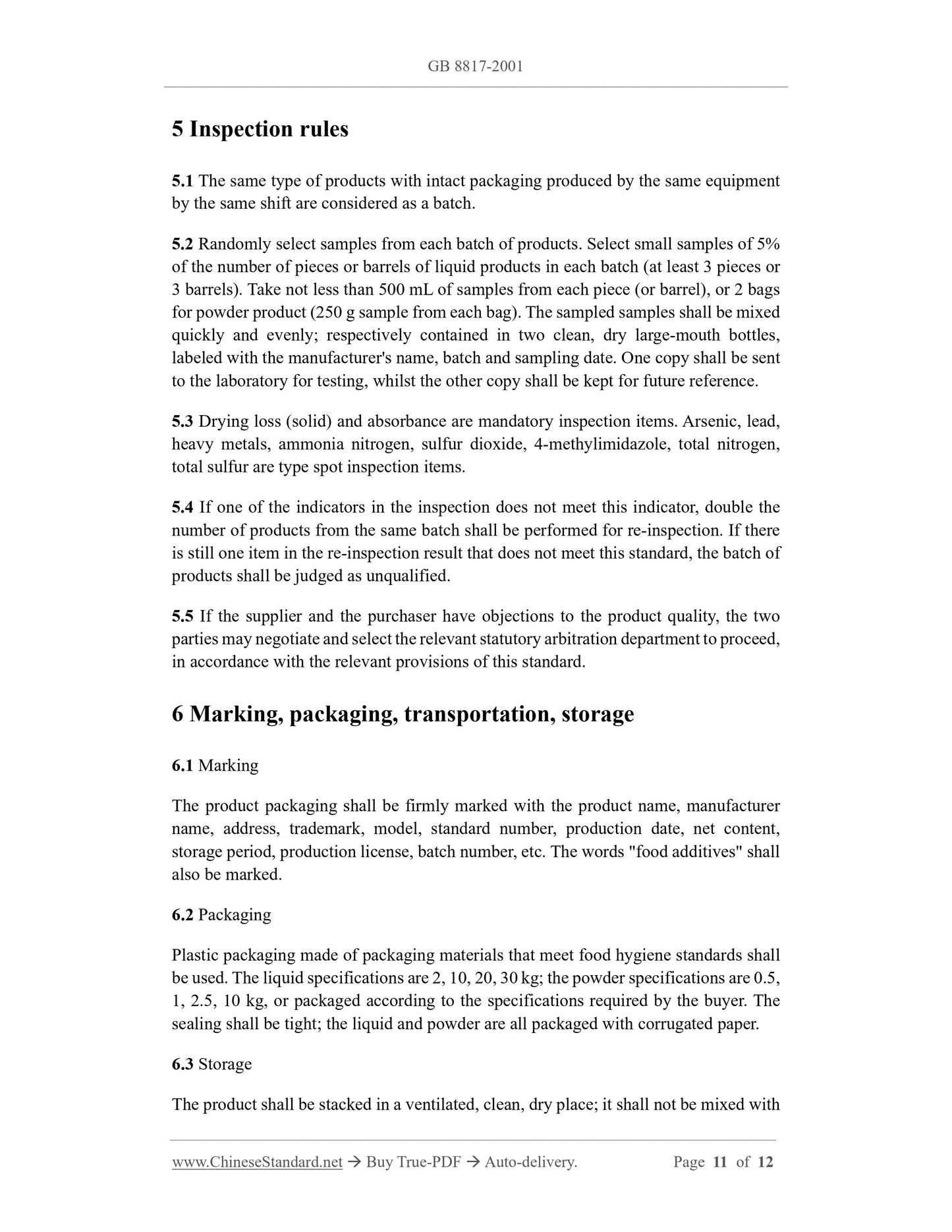1
/
of
7
www.ChineseStandard.us -- Field Test Asia Pte. Ltd.
GB 8817-2001 English PDF
GB 8817-2001 English PDF
Regular price
$210.00
Regular price
Sale price
$210.00
Unit price
/
per
Shipping calculated at checkout.
Couldn't load pickup availability
GB 8817-2001: Food additive Caramel (Sulfite ammonia caramel, ammonia caramel, plain caramel)
Delivery: 9 seconds. Download (and Email) true-PDF + Invoice.Get Quotation: Click GB 8817-2001 (Self-service in 1-minute)
Newer / historical versions: GB 8817-2001
Preview True-PDF
Scope
This standard specifies the technical requirements, test methods, inspection rules,packaging, marking, storage, transportation requirements for liquid and powdered
caramel made by ammonium sulfite method, ammonia method, plain method.
This standard applies to liquid and powdered caramel made by ammonium sulfite
method, ammonia method, plain method, using sucrose, starch syrup, xylose mother
liquor, etc. as raw materials. It is used as colorants in food.
Basic Data
| Standard ID | GB 8817-2001 (GB8817-2001) |
| Description (Translated English) | Food additive Caramel (Sulfite ammonia caramel, ammonia caramel, plain caramel) |
| Sector / Industry | National Standard |
| Classification of Chinese Standard | X41 |
| Classification of International Standard | 67.220.20 |
| Word Count Estimation | 8,881 |
| Date of Issue | 8/6/2001 |
| Date of Implementation | 2002-02-01 |
| Older Standard (superseded by this standard) | GB 8817-1988; QB 1412-1991; QB 2392-1998 |
| Quoted Standard | GB/T 602-1988; GB/T 5009.5-1985; GB/T 5009.17-1996; GB/T 5009.34-1996; GB/T 8449-1987; GB/T 8450-1987; GB /; GB/T 602 - 1988; GB/T 5009.5-1985; GB/T 5009.17-1996; GB/T 5009.34-1996; GB/T 8449-1987; GB/T 8450-1987; GB/T 8451-1987 |
| Adopted Standard | FCC �� -1996, NEQ |
| Issuing agency(ies) | General Administration of Quality Supervision, Inspection and Quarantine of the People Republic of China |
| Summary | This Chinese standard specifies the method using ammonium sulfite, ammonia, liquid and powder made ??from the common law caramel color of the technical requirements, test methods, inspection rules, packaging, labeling, storage and transportation requirements. This standard applies to sucrose, starch syrup, the sugar liquor and other raw materials, the use of ammonium sulfite method, ammonia, common law made ??in liquid, powdered caramel color, used as a coloring agent in foods. |
Share

